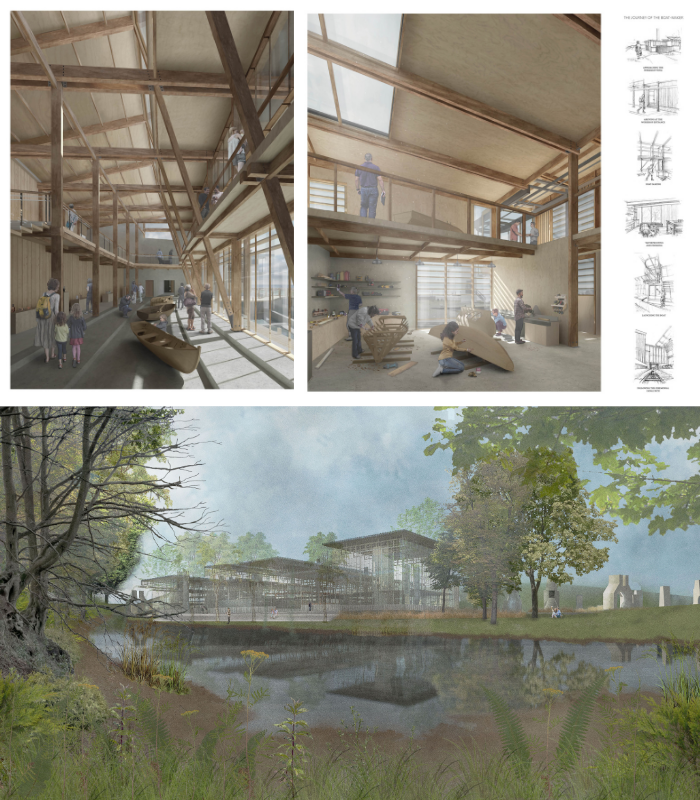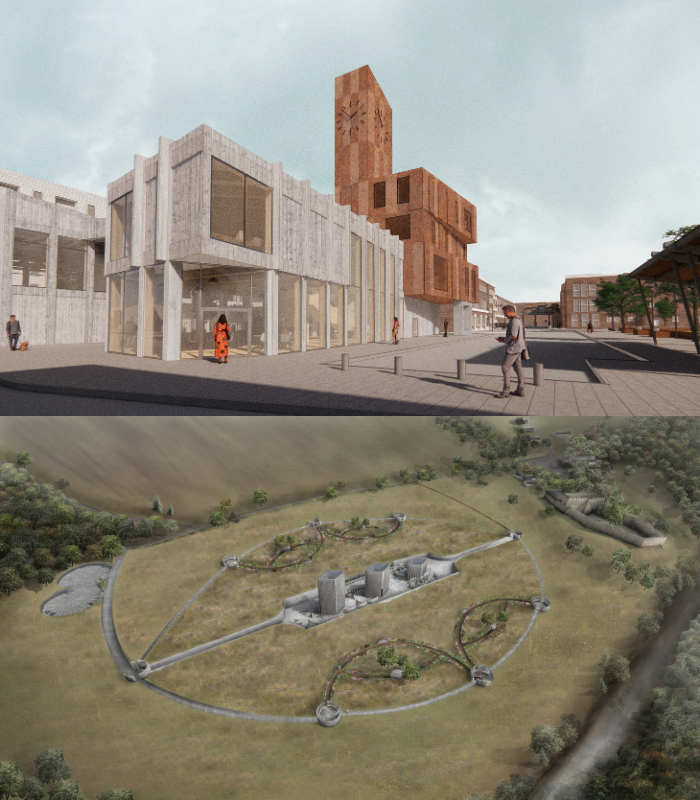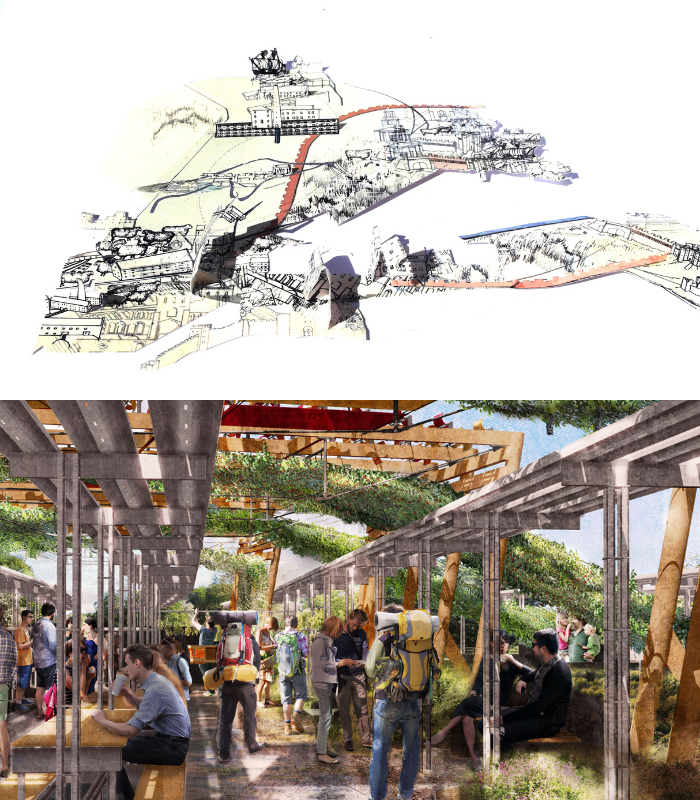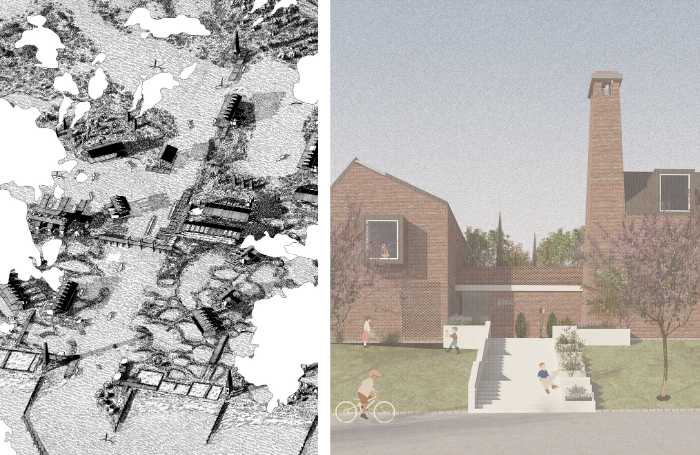This year, RIBA North East Student Awards 2020 were delivered online to celebrate the talent of architecture students in the North East region and to reward them in the pursuit of excellence in the study of architecture.
Schemes submitted for the Student Awards were designed by students from Schools of Architecture at Newcastle University and Northumbria University. Each school was asked to submit two Part 1 design projects and two Part 2 design projects.
The entries comprised of the students’ main end of year projects. This year, students were asked to put their final degree show into a PowerPoint presentation. Students then presented their work to the jury panel digitally via Microsoft Teams.
This year's judging panel featured Alexandra Blaylock from Ryder Architecture, Rob McCartney from Harris Irwin Architects and Ben Devereau from Liverpool University.
RIBA North East Student Award winners
- Part 1 Winner: Roxana Caplan - Newcastle University
- Part 2 Winner: Emma Hodgkiss - Northumbria University
- Part 1 Commendation: Joe Caden - Newcastle University
- Part 2 Commendation: Michael Robinson - Newcastle University

Submissions and judges' comments
Part 1 submissions
Wiktoria Skarbek - Northumbria University
Mitford Whisky Distillery
An interesting exploration into the whisky industry and how this can become a whole visitor experience though all aspects of the process. The project had a materiality inspired by the abandoned materials around the site which told a clear story through the site layout and monoliths. The scheme was presented to a high level displaying a great control over her choices of media, using varying techniques to communicate her designs with attention drawn to her use of water colours and internal CGIs.
Roxana Caplan - Newcastle University (winner)
Fisherman's community and boatmaking centre
Roxana demonstrated considerable thought, skill, and care in her work, producing an impressive, detailed scheme with high levels of architectural design ability shown at a macro and micro scale. During Roxana’s design process she discussed reflective exploration of her drawing skills, a mature and refreshing example of continually exploring your own design process to produce successful response to her initial brief. The exploration of context through to detailed user experience was clearly shown and articulated through all imagery.

Oliver Paul - Northumbria University
Life in Death - A Crematorium for Bothal
Oliver impressed with his presentation skills, speaking well to communicate his design process and influences, drawing on the rich cultural and built history of his chosen site context. The mixed used of concrete was extensively used throughout his design to create monolithic structures drawing precedence from the local castle, always maintaining clear vistas to the castle beyond. There was emotive imagery, and interesting connection to land through a clear narrative. It challenged the traditional ideas of death and funeral settings with a peaceful yet grand response.
Joe Caden - Newcastle University (commended)
St James Community Centre: Socially Driven Design
Joe impressed with how well he presented his scheme: a scheme which was clear to follow and understand his early thinking and design concepts, particularly his use of collage to investigate the layers of a building’s envelope. A lovely idea to show the building through a “day in the life of” perspective, using beautifully crafted internal renders to take the viewer on a journey around the building’s different spaces. The site analysis across the area of Liverpool was really strong and drew a clear picture of the area. The presence of the building was successful in creating an eye catching building and the use of timber internally created a warm and inviting space for the community to use.

Part 2 submissions
Emma Hodgkiss - Northumbria University (winner)
Wilding the Vergelands: The Great North Stage Posts
Interesting and very bold journey beginning at the wider concept of not needing the A1, distilled down to a specific site intervention. It was a really convincing argument for creating a UK equivalent of the Camino de Santiago, and the premise of reuse and sustainability was strong. Starting off her presentation discussing ideas and concepts at a national level, then gradually focusing down to the smaller scale of Morpeth to base her architectural designs, while not losing focus of her ideas of sustainability and rewilding concepts, Emma used innovative sustainable building techniques with her rammed earth tyre wall and reclaimed seat belts to provide a thought-provoking answer to her brief.
Michael Robinson - Newcastle University (commended)
Hawick, a mercantile spirit
Michael presented his scheme with passion and engaged the judges instantly. He was able to communicate his concept well, using some really nice hand sketches, and through exploring his design process using a board game concept, evoked more intrigue into his final design. Michael had detailed a technical section which was a beautifully crafted drawing to help give the sense of scale he was relating to in his precedence studies. There was a clear passion for Hawick and its history and the imagery was very immersive with a variety of media.

Emma Burles - Newcastle University
A children’s streetscape
The presentation was exceptionally clear and had been well adapted to a digital presentation. Some lovely imagery and ideas around children’s play and safety as a current issue. There was also interesting research presented into the historical beginnings of safe streets for children. The buildings responded to their context successfully, the building arrangement and architecture sitting well within its context.
Richard Lamming - Northumbria University
Down in the mud
Richard presented some breathtaking hand drawn imagery that really drew the viewer in, with a style resembling etchings. The scheme asked questions about living in a flood zone area reclaimed by water following the rise in sea levels. Some enjoyable architectural explorations of mass materials, and working relationships of spaces.
Be part of the RIBA Future Architects community
Want to see more student work? RIBA Future Architects is our network for future and emerging architects, designed to support, inspire, and provide a voice as you transition from study to practice. View our resources.










